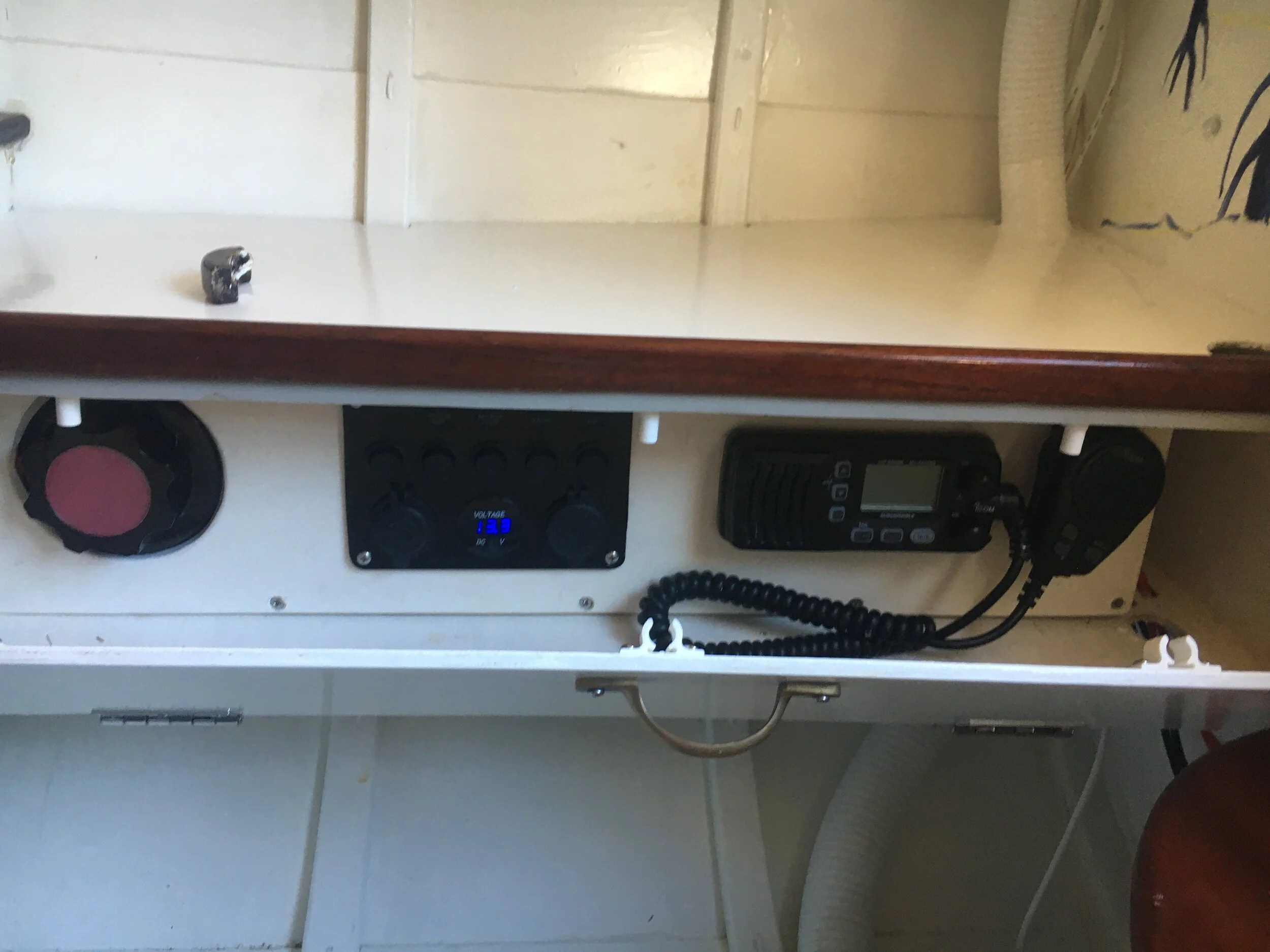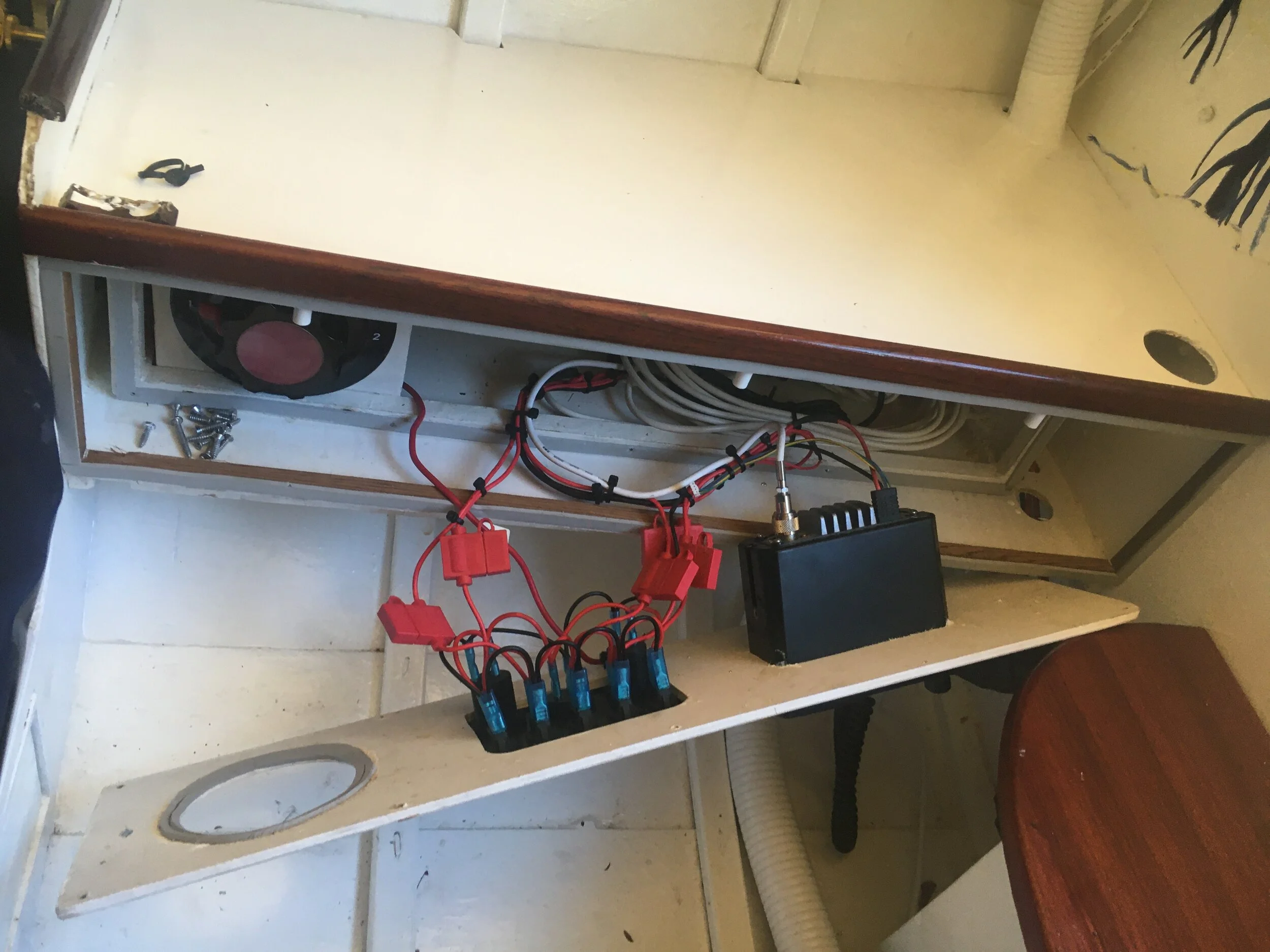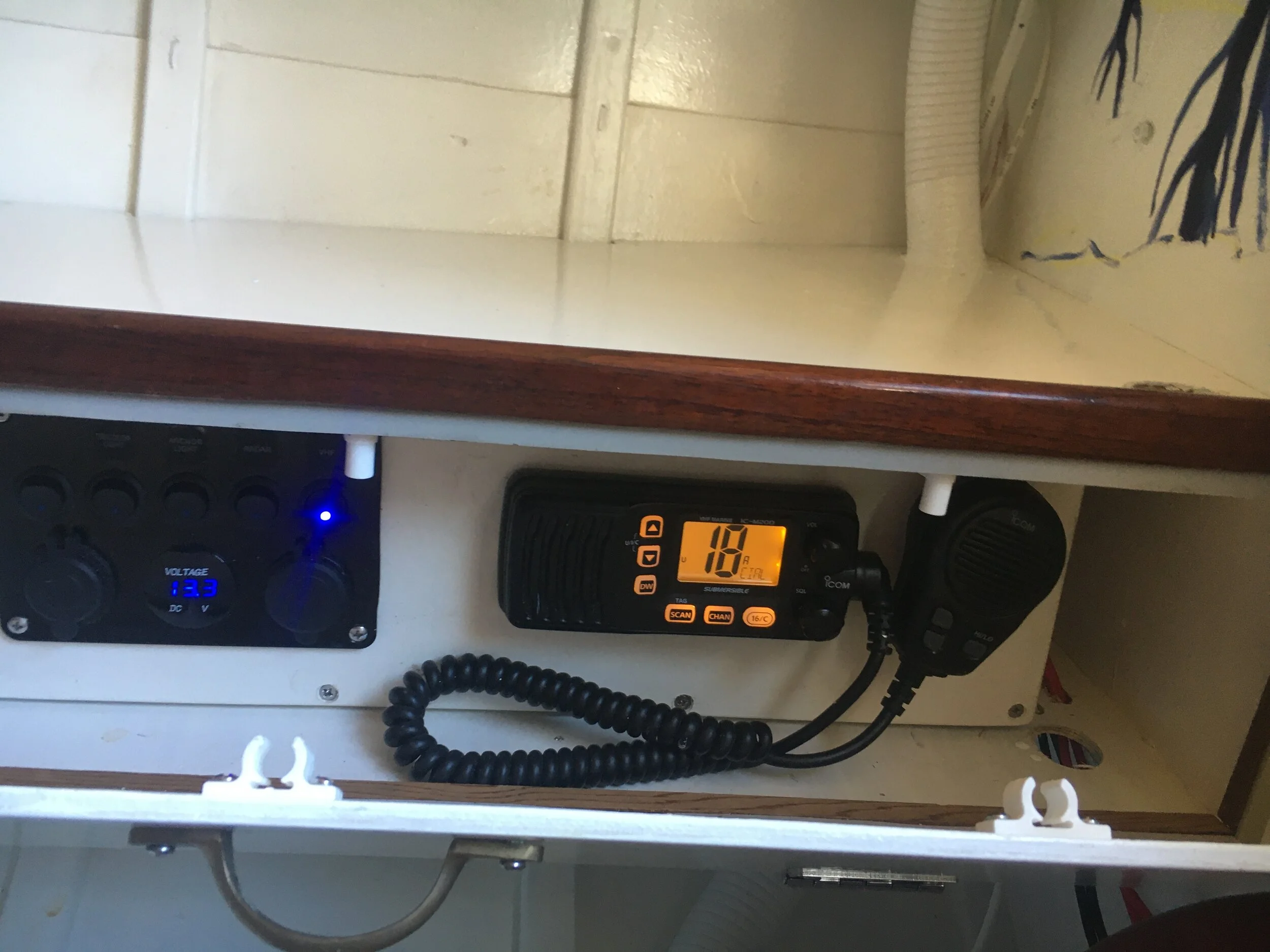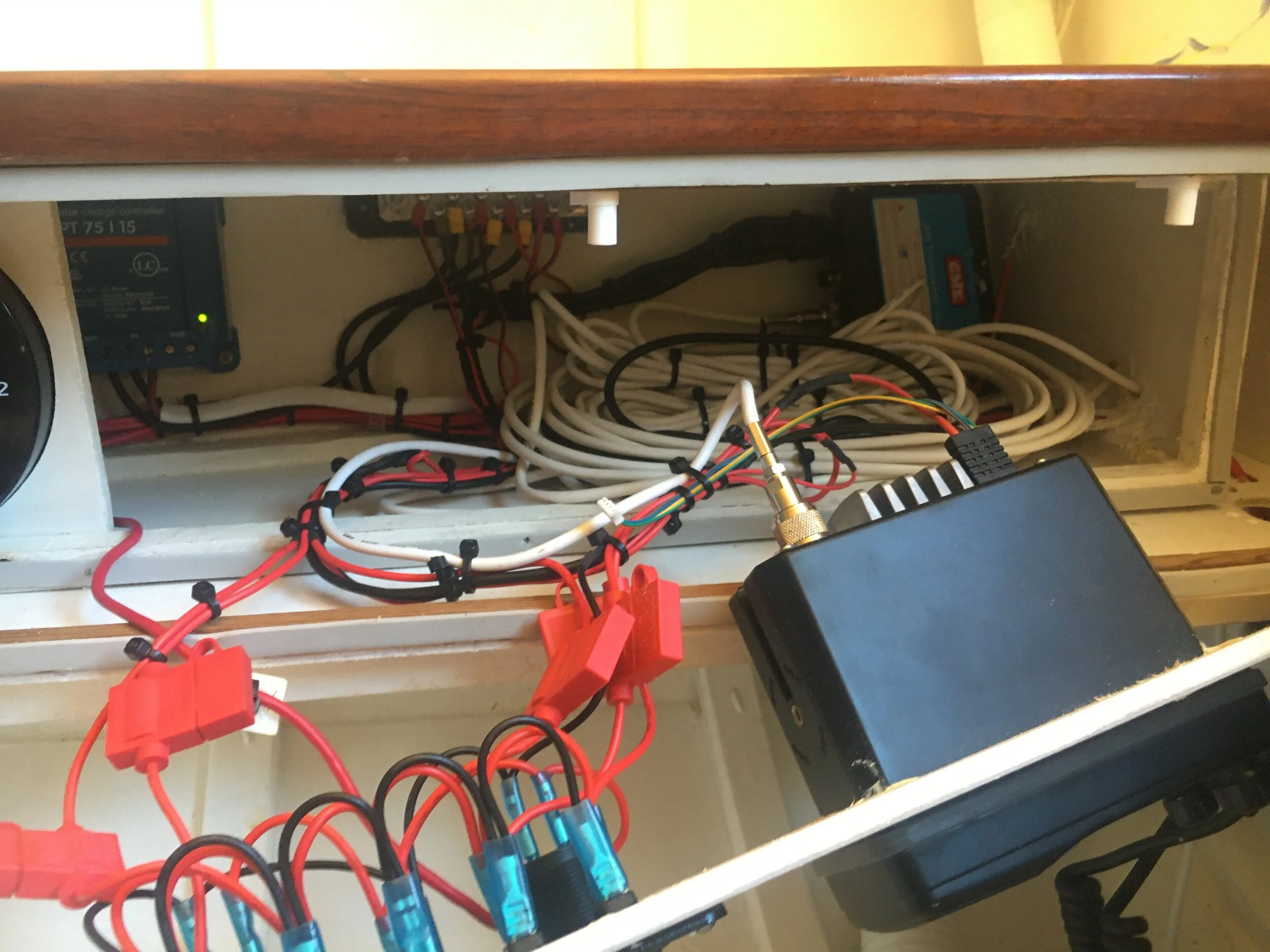Electrics and Electronics
Keep it simple sailor.
Here I will describe the simple electrical system onboard Maiwar.
I've had boats with no electrical system at all, relying simply on AA batteries and kerosene. It's a lot fun, but not really suitable for this adventure. As I want to be able to understand every part of my boat I need to keep the electrical system as simple as possible, without compromising my safety.
The two main reasons I need electrics onboard are to be heard and to be seen. These two factors are vital to ensure my safety at sea.
Being heard means that I will need a VHF radio and a satellite phone. A fair amount of thought went into purchasing a radio as there are many considerations. I toyed with the idea of a HF radio. These are large, old fashioned radios that transmit very long distances, meaning that I would be able to talk to other HF radios around the world. This would have been nice. However, HFs require very tall ariels and a lot of battery power. These two limitations on a small boat meant that a HF was not going to be practical. This is especially true when considering that, if an emergency does arise, I will be able to make clear contact using a satellite phone. With this in mind I settled for a tried and true VHF radio. These are designed for 'line of sight' communication, mostly used when talking to nearby boats. I did a fair bit of research and learnt about modern 'DSC' equipped radios that can send out distress signals and give your position. This seemed like a good option. However, with the amount of other safety gear I will have onboard, and the limitations of DSC, I decided that I would instead opt for a basic model VHF radio, nothing special, but simple and robust enough to do the job . The added advantage of a simple radio is that it only requires one antenna and costs a fraction of the price.
The satellite phone is, as far as I am concerned, a modern luxury that I hope not to need. I will of course take one for emergency situations, but if all goes to plan, it will live in my emergency bag, untouched. It could be tempting to use it once in a while to call family or friends, but I would like to stay pure to the adventure, only getting the opportunity to contact loved ones when I get to an island with a telephone. We'll see how we go...
Now to be seen.
There are two ways in which I will be seen by other boats. First, with navigation lights, and second, with an AIS transponder.
The navigation lights are pretty standard. I've got a tricolour and an all-round-white light. These are mounted on a stainless rod on the foredeck.
The AIS is an interesting case. AIS stands for Automatic Identification System. It’s a global positioning system that means that every equipped boat can see other equipped boats on their GPS chart plotter. This will be the difference between me staying safe, or being hit by another boat at night. The AIS works on both the GPS and VHF systems, meaning it has two ariels. Boats will appear on the chart plotter screen when they are within VHF range.
Most vessels are equipped with an AIS transponder and receiver. This means that they can be seen by other boats, and see boats on their screen. I will only have a transponder. First, because I don't have a screen on the boat, second, because I don't have any hope of moving out of the way of a ship if it's heading my way. I need to rely on them seeing me and moving out of my way. Many, many people have cruised the Pacific without AIS and it's easy to think of it as a luxury. Nowadays people rely on it so heavily that they no longer see the need to keep a proper watch. So for me at least, it’s an essential. I wonder how many people are still out there cruising the Pacific without one.
Other than a VHF, AIS and navigation lights, I've got two cabin lights and that's it for the electrical system. To power all this I've got two 52 watt flexible solar panels. These power two 55ah sealed AGM batteries.
And that's it. It's about as simple as it gets for an onboard electrical system.
So who did all the work? I'm lucky enough to have a good mate who is a marine electronics technician, or something like that anyway. He was kind enough to spend a few Saturdays doing all the wiring. My job was to mount all the electrical equipment in its correct place, including making a box for the batteries. Charlie did all the things that are above my pay grade.
The AIS, VHF, battery isolator switch and switch panel are all housed in a sealed watertight box. All the wires run into this and are also sealed. This box is mounted in a cupboard in the cabin meaning that there's almost no chance of water getting into the system.




